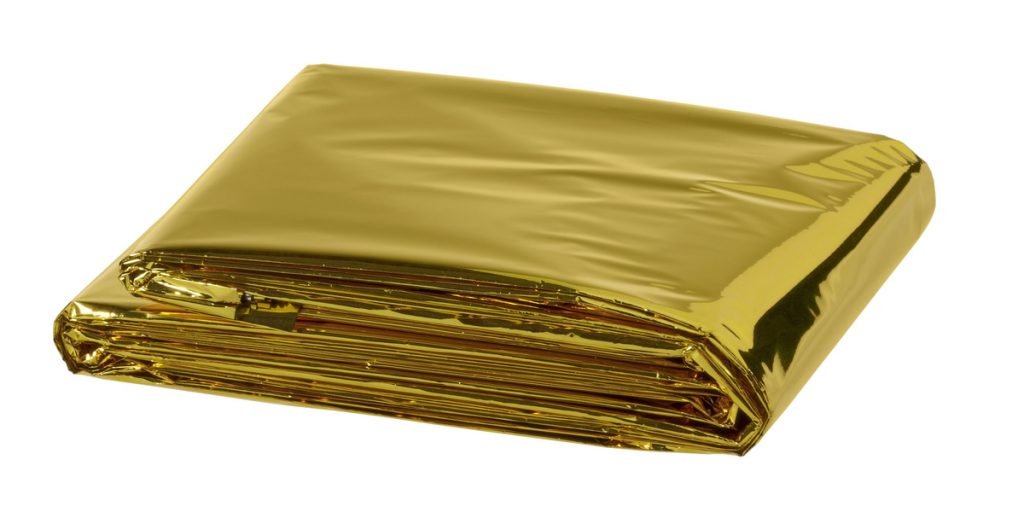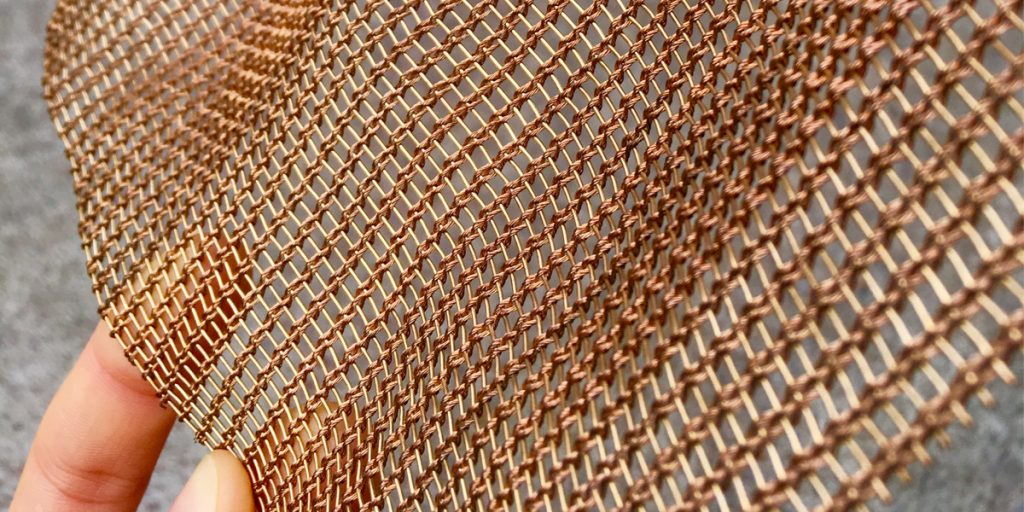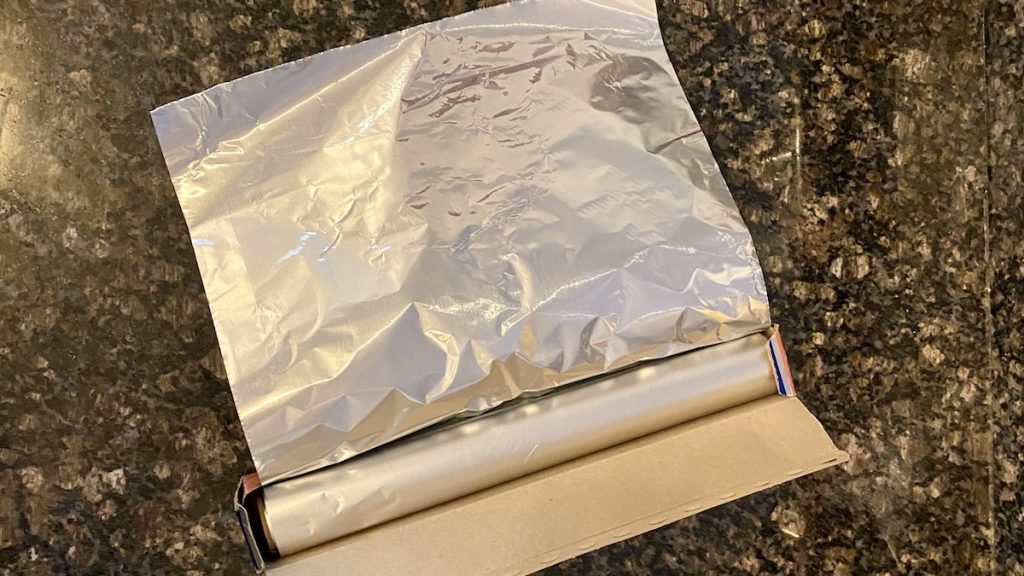EMF awareness has grown over the last couple of years. However, most people are still oblivious to the amount of radiation they are exposed to daily at work, at home, and even when they’re asleep.
There’s also the category of people whose nature of work makes them more vulnerable to the harmful effects of EMF more so if they work near strong radiation sources. So, if you work near cell towers, high voltage power lines, medical scanners, or industrial machines, you are at a higher risk of developing various diseases if you don’t take the necessary measures to protect yourself.
Getting your hands on protective gear manufactured from high-quality shielding materials is a great way to do it. Then again, do you understand how EMF shielding materials work to protect you? This guide seeks to demystify the subject.
You can check out: our guide on EMF shielding fabric.
Why Is EMF Dangerous?
Electromagnetic field radiation (EMF) is a term that is used to describe a combination of electric and magnetic energy. Radiofrequency (RF) energy like that emitted by cell phones also falls under this category.
Electromagnetic signals usually travel in the form of waves which have various frequencies and wavelengths attached to each of them. Depending on these two parameters, these can be broadly classified into two main groups: Ionizing and non-ionizing.
Ionizing Radiation
Ionizing energy is extremely toxic and hazardous to all biological life forms. Its effects can be seen almost instantly upon exposure. It brings with it certain death when humans are exposed to it for too long and at high doses. Gamma rays and X-rays are the most well-known examples of ionizing radiation.
These types of electromagnetic waves carry enough energy to dislodge electrons from atoms. This process is what is referred to as ionizing. When the atoms in any plant, animal or human ionize, one of three things may happen:
- The cell could die
- It could repair itself from the damage sustained, or
- Mutate incorrectly at which point it can become cancerous
However, all cells aren’t affected by ionizing energy in the same way. Those that are most susceptible to the effects of ionization are those that reproduce the most. Examples of this would be the cells in an unborn child in the womb.
Non-ionizing Radiation
Although non-ionizing radiation was widely regarded as harmless, recent research has called that assumption into question. Even the International Agency for Research on Cancer published a book (available for PDF download) on the cancer risks of non-ionizing radiation.
Unlike ionizing radiation, non-ionizing waves don’t have sufficient energy to cause ionization. They can only move the electrons around the atom, causing it to vibrate. Radio waves, microwaves, and visible light are all examples of non-ionizing electromagnetic waves.
Ultimately, you want to protect yourself because both ionizing and non-ionizing radiation exposure has been linked to a myriad of physiological and neurological health problems, as well as diseases like cancer.
EMF Shielding: Why You Need It
EMF shielding refers to the various measures adopted to minimize exposure to energy generated by electromagnetic fields. These actions make use of various shielding materials that are designed to neutralize electromagnetic energy.
In the modern world, it is virtually impossible to escape from the effects of EMFs. Most of the technology in use rely on these waves to function on some basic level. For instance, you’re probably reading this guide from your smartphone or laptop.
Both those devices emit copious amounts of electromagnetic energy. iPads and tablets all use Wi-Fi, Bluetooth, and cellular networks to be able to connect to the internet, connect to other devices, and share information.
When you go to your favorite local coffee shop, you’re constantly being bombarded by wireless networks coming at you from every direction. If you live or work near a cell tower, or high voltage power line, you’re at an even higher risk of exposure. You can measure emf from the powerline (Know how).
The problem with most electronic devices is that their body and design offer zero resistance to EMFs. They operate at high frequencies, which makes it easy for them to penetrate human tissue and wreak havoc. With EMF shielding, however, your exposure to these harmful waves is reduced significantly.
How EMF Shielding Materials Works to Protect You
The first-ever universally accepted EMF shield, the Faraday Cage, was invented by Michael Faraday in 1836. Since then, the same principles have been used to develop products that block harmful exposure to radiation.
More on how Faraday Cages work in this video:
While it’s not possible to use these materials to block all radiation, you can certainly reduce your exposure to a minimum.
For instance, to communicate using your cell phone, you’ll have to face some degree of exposure from the cellular network for your device to function. Nevertheless, you can reduce the level of radiation it emits, without blocking it out entirely. Here’s how electromagnetic shielding works.
As mentioned earlier in the article, EMFs comprise electric and magnetic fields combined. An electric field applies a force on electrons, which are the charge carriers in an ideal conductor, which in this case is the shielding material. This induces a current to flow, which in turn displaces the charge inside the material. The result of this is that the electric field inside gets canceled out, causing the current to stop flowing which in turn terminates the electric field.
Likewise, magnetic energy causes eddy currents that cancel out the fields on the inside or outside of the shielding material. As a result, the radiation gets reflected off the surface, causing the internal or external fields to remain inside or outside, respectively.
The shielding capacity of any given material depends on several factors, one of which includes the electrical resistance of the conducting material. Shielding materials consist of a conductive metallic mesh material that is thin and light enough to be weaved into various products as well as light fabrics like cotton. Shielding materials can neutralize and deflect EMFs.
Do EMF Shielding Materials Work to Block Radiation?
EMF shielding materials are based on the concept of attenuation. This is the principle where the force or energy of a wave/signal gradually reduces as it passes through different mediums. A few examples of this concept in motion include:
- Sound attenuation when it passes through a wall
- Light attenuation when it passes through a tinted window
- X-ray attenuation when you wear a lead vest at the dentist’s office
There are three main materials used in the attenuation of EMF radiation. These are detailed below.
Mylar
Mylar offers excellent EMF shielding when placed between you and the radiation source. It’s important to note, however, that the goal of protecting you and your loved ones against the harmful effects of radiation isn’t to block it by 100% but to reduce it by at least 90%.

Mylar is convenient, lightweight, and affordable and does a pretty good job of keeping EMF radiation at bay.
It comes in different qualities and thickness and with varying attenuation ratings. There are lots of Mylar blankets in the market in different designs that you can choose from. It’s one of the most budget-friendly EMF protection materials that you’ll come across.
Copper
Copper mesh is one of the most effective EMF shielding materials around. It is extremely effective in blocking EMF and RF radiation of almost any wavelength by up to 95%. Unlike other materials, the thickness of the copper mesh doesn’t make a difference when it comes to its ability to attenuate EMFs. The only thing you need to look out for is to ensure that the holes in the mesh are smaller than the wavelength of the waves it is designed to block.

To shield against radiation, position the copper mesh material between you and the EMF source since electromagnetic waves travel in straight lines. There are copper mesh screens and films available in the market that are specifically designed for windows to keep out EMF rays while still letting natural light in.
You will often see copper being used for shielding against radiation in hospitals, server rooms, etc. but bear in mind that it is quite an expensive option.
Aluminum
Aluminum is an excellent EMF shielding material against RF waves. Remember, RF is also a form of EMF. Aluminum is used to create a barrier that is often referred to as a Faraday cage that blocks any RF waves from getting through. The best part about it is that it is super cheap!
If you want to test out its effectiveness, try wrapping your cell phone in aluminum foil and call it from a different phone. It won’t register any signal. The foil acts as a Faraday cage, completely blocking out all RF waves from reaching your phone.

The thickness of the aluminum foil doesn’t matter. A thin foil works just as well as a thick one. What matters is that there are no holes larger than the wavelength of the signal it is attempting to keep out.
You’ll find applications of aluminum as a radiation blocker are all around. For instance, if you take an up-close look at your microwave oven window, you’ll see a subtle film of aluminum mesh layered in. Your microwave oven functions as a Faraday cage to prevent any harmful microwave rays from escaping the confines of the oven.
It is important to mention, however, that Aluminum doesn’t absorb radiation. It merely blocks it. Therefore, since EMF waves only travel in straight lines, you would need to place the shield between you and the radiation source.
How to Use Aluminum for EMF Radiation Shielding
One of the best things about aluminum is how easy it is to use. If you wanted to eliminate the RF rays emanating from your Wi-Fi router, take a few sheets of aluminum foil and use them to create a cage with an open bottom. Next, slip a large enough sheet under the router. Aluminum foil works as a perfect emf shield.
To block all the wireless signals being transmitted from the device, all you have to do is place the cage over the router to block off all RF and EMF radiation. This comes in handy at night when everyone’s asleep, and no one needs to use Wi-Fi.
You can create a similar cage for storing electronic gadgets like tablets and cell phones when everyone’s at the dinner table or during game night with friends when no cell phones are allowed!
EMF Shield Gaskets
Some of the most common EMF shields available on the market are gaskets. They are convenient and cost-effective, which makes them a popular choice among people looking to reduce their EMF exposure levels.
Before settling on a particular gasket, some of the factors you need to consider include its lifespan, cost, space it will occupy, weight, operating frequency, and shielding effectiveness.
Wire-Mesh Gaskets
These types of gaskets are manufactured using copper, aluminum, or Mylar. They provide high shielding efficiency over a wide EMF frequency range. If you’re looking for an affordable yet effective low-end gasket with lots of versatile mounting options, then this is your best bet.
Electrical Conductive Elastomers
Conductive elastomers offer shielding resistance of up to 120dB. They are the recommended choice for both environmental and EMF shielding. They are available with either carbon or elastomer conductive fillers.
Combination Shielding
These gaskets are made from a combination of different shields for more than one application in a single fabric or material. They are manufactured by molding conductive elastomers onto metal cans that server as shields.
Fabric-Over-Foam
For those in search of a gasket with a high-shielding attenuation capability and low compression force requirement, the fabric-over-foam gasket was designed for that very purpose. They have many applications in the automotive industry and provide grounding and shielding to various electronic components.
EMF Protection Paint
If you’re looking for a way to protect your entire home from external radiation, EMF protection paint is the way to go. Some of the available paint brands are based on potassium silicate, which is effective in blocking out EMF rays.
However, the paint is only effective in keeping harmful radiation out if you ground the paint. This can be done either through an electrical socket or directly to the earth.
EMF Anti-Radiation Blankets
Anti-radiation blankets are made with materials like silver, copper, aluminum, and Mylar and can attenuate EMF radiation that passes through it. When the photons pass through the blanket, the shielding material scatters or absorbs the photons as they attempt to get through. The metals are weaved into the fabric and can reduce more than 90% of EMF radiation.
All you have to do is drape the blanket over yourself, your child, or your pregnant belly if you’re an expectant mother to protect you and your loved ones against the harmful effects of EMFs.
Against these artificial materials, we can get resort to radiation absorbing plants too. There’re a plenty of such plants. We have covered an article on it here.
How to Test If EMF Shielding Materials Work
Now that you know which EMF shielding materials you can get, how can you tell if they work? The best way to check if a particular product is an effective blocker is to get your hands on a good quality EMF meter and see how well the copper, aluminum, or Mylar mesh material works in protecting against radiation.
Start by setting the meter to measure the three different types of EMFs. Measure the energy being emitted from a particular radiation source like your laptop. Record these readings before proceeding to install the protective shields.
Use the meter once more to measure the radiation levels with the various shields in place. If there’s a reduction in the level of EMF by 90% or more, then you know it works. If not, then you might have a fake or faulty product on your hands.
Enjoy Technology Safely
Investing in radiation protection materials is a better alternative than using up your money to seek treatment for a host of different radiation-related ailments. Now that you understand how EMF shielding materials work, you can enjoy all the perks that modern technology has to offer while minimizing your exposure. Always test any shielding products you get to ensure that they live up to their promise. Do you live or work near a cell phone tower? Check out our blog to learn about the danger of being close to one.
References
Nuclear Regulatory Commission. Early (Acute) Effects of Radiation.
Mettler, Guskova, and Gusev, Health Effects in Those with Acute Radiation Sickness from the Chernobyl Accident Health Phys. 93, 462, (2007).
International Organization for Research on Cancer. IARC monographs on the evaluation of carcinogenic risks to humans. Non-ionizing radiation, Part I: static and extremely low-frequency electric and magnetic fields. Vol. 80. Lyon: IARC; 2002.
Genuis SJ. Fielding a current idea: exploring the public health impact of electromagnetic radiation. Public Health (2007), doi:10.1016/j.puhe.2007.04.008


